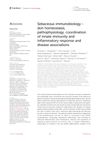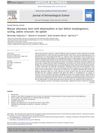TLDR Gasdermin A3 overexpression in skin causes inflammation and hair loss.
The study demonstrated that inducible expression of gasdermin A3 (Gsdma3) in the epidermis of a transgenic mouse model caused epidermal hyperplasia, skin inflammation, and hair cycle defects, indicating gain-of-function mutations. Gsdma3 expression led to spontaneous keratinocyte necrosis, linked to mitochondrial oxidative stress and an inflammatory response. These findings suggested that the Gsdma3-inducible mouse line could be useful for testing treatments for irritant contact dermatitis and immune-mediated hair loss.
54 citations
,
December 2011 in “American Journal Of Pathology” A Gsdma3 mutation causes hair loss due to stem cell damage from skin inflammation.
 12 citations
,
August 2022 in “Biochemical Journal”
12 citations
,
August 2022 in “Biochemical Journal” Different types of cell death affect skin health and inflammation, and understanding them could improve treatments for skin diseases.
 76 citations
,
June 2015 in “Journal of biomedical science”
76 citations
,
June 2015 in “Journal of biomedical science” Mutations in Gasdermin A3 cause skin inflammation and hair loss by disrupting mitochondria.
 21 citations
,
November 2022 in “Frontiers in immunology”
21 citations
,
November 2022 in “Frontiers in immunology” Sebaceous glands play a key role in skin health, immunity, and various skin diseases.
 May 2024 in “Clinical Cosmetic and Investigational Dermatology”
May 2024 in “Clinical Cosmetic and Investigational Dermatology” Manipulating cell cleanup processes could help treat hair loss.
 52 citations
,
October 2012 in “Journal of Dermatological Science”
52 citations
,
October 2012 in “Journal of Dermatological Science” The document concludes that mouse models are crucial for studying hair biology and that all mutant mice may have hair growth abnormalities that require detailed analysis to identify.




